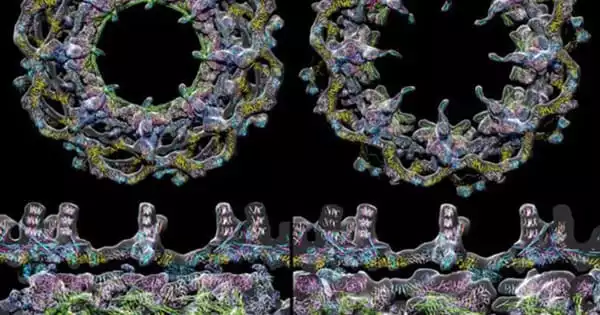Witchweed (Striga spp.) and broomrapes (Orobanche and Phelipanche spp.) are root parasitic weeds that cause significant crop losses worldwide. In nature, they are obligatory parasitic blooming plants that parasitize other autotrophic plants of agricultural importance. The plants adhere to their hosts by haustoria, which transport nutrients from the host to the parasite. Weeds affect crop productivity through competing for resources (nutrients, water, and photosynthetically active radiation), by allelopathic effects, and by lowering the quality of food, feed, and fiber.
The findings of this work are designed to help crop protection botanists better understand the distribution of planteose throughout the endosperm, perisperm, and seed coat of Orobanche minor, a root parasitic weed, which is consistent with planteose’s activity as a storage carbohydrate. The findings of this study show indisputably that the enzyme OmAGAL2, which is involved in the hydrolysis of planteose, is a promising molecular target for root parasitic weed management.
According to Chris Parker’s analysis, there are no accurate global numbers for the entire area impacted by Orobanche or Striga based on rigorous sampling. However, an estimated 16 million hectares in the Mediterranean and West Asia region were ‘at risk’ of Orobanche assault. In Africa, the similar figure for Striga was 44 million hectares, with a total revenue loss of over USD 2.9 billion from maize, pearl millet, and sorghum. According to more current estimates, Striga species damage 50 million hectares and 300 million farmers in Africa, causing losses of USD 7 billion.
The findings of this work are designed to help crop protection botanists better understand the distribution of planteose throughout the endosperm, perisperm, and seed coat of Orobanche minor, a root parasitic weed, which is consistent with planteose’s activity as a storage carbohydrate.
Associate Professor Atsushi Okazawa
Because parasitic weeds are obligate parasites, they are difficult to control. The use of growth modulators specific to root parasitic weeds is one potential way of management. Understanding the physiological mechanisms that occur during root parasitic weed life cycles is critical for finding specific growth modulator targets.
Planteose (a store carbohydrate) metabolism could be used to reduce root parasitic weeds. In prior research, Associate Professor Atsushi Okazawa and his colleagues discovered that strigolactones (a class of plant hormones that induce branching in plants and the establishment of symbiotic arbuscular mycorrhizal fungus) stimulated planteose metabolism in germinating seeds of Orobanche minor. Nojirimycin (a strong α-glycosidase inhibitor) decreased planteose metabolism and hampered seed germination in Orobanche minor, indicating that planteose metabolism could be a target for root parasitic weed control.

This team of scientists from Osaka Prefecture University evaluated the activities of -galactosidases (AGALs) during seed germination of Orobanche minor in a more recent study. They also used matrix-assisted laser desorption/ionization-mass spectrometry imaging to look at the distribution of planteose in dry seeds.
Planteose was discovered in tissues surrounding the embryo but not within it, implying that it may serve as a storage carbohydrate. Biochemical experiments and molecular characterization of OmAGAL2, a member of the α-galactosidase family, revealed that the enzyme is involved in planteose hydrolysis in the apoplast around the embryo after the perception of strigolactones, providing the embryo with essential hexoses for germination. OmAGAL2 was identified as a possible molecular target for root parasitic weed management based on these findings.
The mass spectrometry pictures for two fragment ions were nearly identical, indicating that these fragment ions were all created from the same source, planteose. The authors also provided visual aids illustrating that planteose is dispersed in the endosperm, perisperm, and seed coat of Orobanche minor dry seeds, which corresponds to its role as a storage carbohydrate.
In summary, this study reveals that I planteose is distributed in Orobanche minor dry seeds and its physiological role is unknown, (ii) during seed germination of root parasitic weeds, planteose is rapidly hydrolyzed after perception of strigolactones (SLs), indicating its role as a storage carbohydrate, and (iii) tissues surrounding the embryo, specifically the endosperm, perisperm, and seed coat, play roles in The authors also observed the distribution of the storage carbohydrate (planteose) in seeds of a root parasitic weed for the first time, which adds to the study’s uniqueness.





